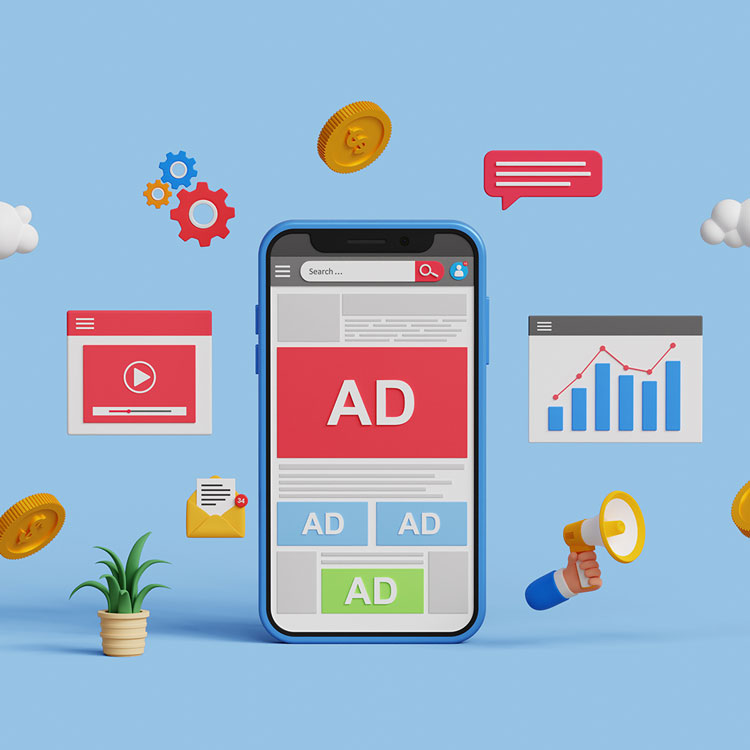Imagine walking into a retail store where products are piled in unmarked boxes, restaurants hide menus under tables, or healthcare clinics bury service details in filing cabinets. Customers would walk out—and that’s exactly what happens when businesses treat their websites like digital attics instead of dynamic storefronts.
Just as a brick-and-mortar store meticulously arranges its displays to entice customers, your website needs to showcase your products and services in a way that grabs attention and drives conversions.
This article will explore how to optimize your online presence to create a successful experience for your target audience.
Why Online Merchandising Matters
With more consumers turning to online channels for their shopping needs, effective online merchandising is essential. Your website must highlight your products and services in a way that captures attention and drives conversion.
64% of consumers visit a website before stepping into a physical location (Google, 2023). Yet, many businesses still treat their websites as static bulletin boards.
Modern shoppers expect:
- Instant clarity (no hunting for prices/services)
- Personalized experiences (e.g., “Customers like you also bought…”)
- Mobile-first design (61% of searches happen on phones)
- Real-time interaction (chatbots, instant quotes)
Let’s break down how to meet these expectations addressing specific elements that pertain to all industries.
The Key Elements of Effective Online Merchandising:
1. Crystal-Clear Branding & Product Presentation:
- Brand Consistency:
Ensure your logo, color scheme, and overall brand identity are consistent across your website. This reinforces brand recognition and builds trust. - Product Spotlights:
Feature your star products and services prominently on your homepage and relevant category pages. Use high-quality images and videos to showcase their features and benefits. - Compelling Product Descriptions:
Go beyond basic descriptions. Highlight the unique selling points of each offering and address the specific pain points they solve for customers. Use evocative language and focus on the value proposition.
2. Transparent & Accessible Pricing:
- Upfront Pricing:
Clearly display pricing information for all products and services. Hidden fees and complicated pricing structures can deter potential customers. - Pricing Tiers (if applicable):
Offer different pricing tiers to cater to varying customer needs and budgets. - Estimate Tools:
For customizable products or services, provide an easy-to-use estimation tool that allows customers to configure options and see pricing in real-time.
3. High-Quality Visuals & Multimedia:
- Professional Photography/Videography:
Invest in high-quality visuals that showcase your products and services in the best light. - Interactive Elements:
Consider incorporating 360-degree views, zoom functionality, or product demonstration videos to enhance the customer experience. - Optimized Images:
Ensure images are optimized for web performance to prevent slow loading times.
4. Comprehensive FAQs & Customer Support:
- Anticipate Customer Questions:
Compile a list of frequently asked questions and provide clear, concise answers. - Live Chat:
Implement a live chat feature to provide real-time support and answer customer queries instantly. - Contact Information:
Make it easy for customers to contact you via phone, email, or contact form.
5. Strategic Cross-Selling & Upselling:
- Related Products/Services:
Suggest related products or services to customers based on their browsing history or current selections. This can increase average order value and customer satisfaction. - Bundled Offers:
Create attractive bundles of complementary products or services at a discounted price. - Personalized Recommendations:
Utilize data and analytics to personalize product recommendations for individual customers.
6. Streamlined Checkout Process:
- Guest Checkout:
Allow customers to checkout without creating an account to reduce friction. - Multiple Payment Options:
Offer a variety of payment methods, including credit cards, PayPal, and other popular options. - Secure Checkout:
Ensure your checkout process is secure and PCI compliant to protect customer data.
Industry-Specific Strategies & Examples
1. Retail: Turn Browsers Into Buyers
Challenge: Online shoppers can’t touch products, so clarity and engagement are key.
Solution:
- Augmented Reality (AR) Previews:
Let customers “try” products virtually (e.g., furniture retailers like IKEA use AR to show how items fit in a room). - User-Generated Content (UGC):
Feature customer photos/reviews to build trust. - Mobile-First Design:
Optimize for thumb-scrolling with large “Add to Cart” buttons.
Action Steps:
- Add a “View in Your Space” AR feature for high-ticket items
- Curate a “Customer Favorites” gallery with social media tags.
2. Restaurants: Serve Up an Irresistible Digital Menu
Challenge: Competing with delivery apps requires standout visuals and convenience.
Solution:
- Video Menus:
Short clips of signature dishes (e.g., a sizzling steak or latte art). - Local SEO Keywords:
Target phrases like “best brunch near [city]” in descriptions. - Integrated Ordering:
Embed DoorDash or Uber Eats directly into your site.
Action Steps:
- Film 15-second dish highlights for Instagram Reels and your website.
- Add a “Order Online” button that compares delivery app prices.
3. Hospitality: Sell Experiences, Not Just Rooms
Challenge: Travelers crave authentic local experiences.
Solution:
- Virtual Tours:
Use 360° videos to showcase rooms and amenities. - Dynamic Packages:
Bundle rooms with local attractions (e.g., “Stay 3 Nights, Get a Free Brewery Tour”). - Chatbots for Instant Support:
Answer FAQs like “Is parking free?” automatically.
Action Steps:
- Partner with local tour companies for bundled deals.
- Add a chatbot to handle common booking questions 24/7.
4. Construction: Build Trust Before the First Call
Challenge: High-cost services require transparency and expertise.
Solution:
- Project Portfolios:
Show before/after photos with client testimonials. - Service Explainer Videos:
Break down complex processes (e.g., “How We Renovate Kitchens in 10 Days”). - Pricing Calculators:
Let users estimate costs for common projects.
Action Steps:
- Create a “How It Works” video series for YouTube and your site.
- Add a “Get a Ballpark Estimate” tool for roofing or remodeling.
5. Healthcare: Prioritize Accessibility & Empathy
Challenge: Patients want quick answers and easy scheduling.
Solution:
- Telehealth Prompts:
Highlight virtual visit options on your homepage. - Symptom Checkers:
Use AI tools to guide patients to the right services. - Clear Pricing Pages:
List costs for common procedures (e.g., physicals, X-rays).
Action Steps:
- Add a “Start a Virtual Visit” button above the fold.
- Create a “Patient Resources” hub with downloadable pre-appointment checklists.
6. Professional Services (Legal, Accounting): Simplify Complexity
Challenge: Clients fear hidden fees and unclear processes.
Solution:
- Service Packages:
Offer fixed-price bundles (e.g., “Small Business Tax Prep: $899”). - Client Portals:
Provide secure document uploads and progress tracking. - Case Study Highlights:
Show how you solved specific problems (e.g., “How We Saved a Client $50K in Audits”).
Action Steps:
- Design a “Pricing Made Simple” page with package options.
- Share anonymized success stories in a “Results Hub.”
Modern Trends & Strategies for Every Industry
In addition to the fundamentals, consider these new digital marketing strategies to further enhance your website's effectiveness:
- Mobile Optimization:
60% of searches happen on phones—test your site on multiple devices. - One-Click Conversions:
Enable Apple Pay/Google Pay for instant purchases. - Personalization:
Use data-driven insights to display tailored content or product recommendations for returning visitors. - Voice Search Optimization:
As more consumers use voice-activated devices, optimize your content with conversational keywords. - Interactive Chatbots:
Deploy AI-driven chatbots to provide 24/7 support, instantly answering common questions. - Social Integration:
Leverage live feeds and customer testimonials from social media platforms to add authenticity. - Sustainability Badges:
Highlight eco-friendly practices (e.g., “Locally Sourced Ingredients”). - SEO Best Practices:
Regularly update your website content with industry-specific keywords and maintain a mobile-friendly design for better search rankings. - Review Aggregators:
Embed Yelp/Google reviews to build credibility.
Final Thought: Adapt or Get Scrolled Past
Your website isn’t a static brochure—it’s a living, evolving touchpoint. By tailoring your digital merchandising to your audience’s needs (and your industry’s nuances), you’ll turn casual visitors into loyal customers.
Using these strategies will craft a narrative that resonates with your audience, making it easy for them to engage, learn, and ultimately, purchase. Embrace the art of digital merchandising, and watch your business thrive—whether retail, restaurants, hospitality, construction, healthcare, or professional services!













